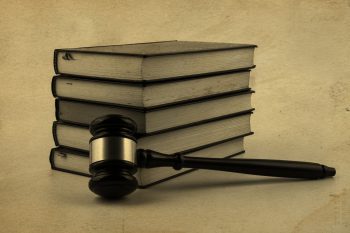How Does a Lawsuit Work? An Overview of the Civil Litigation Process

When you’re injured because of another person’s mistake or recklessness and you’re considering legal action, one of the many questions that often comes to mind is how civil litigation and personal injury lawsuits work.
Lowe Scott Fisher Co., LPA, handles cases on behalf of plaintiffs — the individual or individuals bringing a claim or lawsuit forward — who have suffered a catastrophic personal injury.
Civil lawsuits are legal actions between people, businesses, and other entities in which an injured party asks for compensation. Prior to filing a lawsuit, the attorney you hire may attempt to negotiate a settlement, but if the parties cannot agree, then the case moves into litigation. Most cases will settle before reaching trial, but there are several distinct steps to a civil lawsuit: pleadings, discovery and pre-trial, trial, and (if necessary) appeals.
Pleadings
All parties in a civil litigation lawsuit will typically file initial documents, known as pleadings, that provide a statement of their side of the dispute. The plaintiff’s pleading, the complaint, is filed first and is followed by a response from the defendant(s).
The complaint, which begins the litigation process, is filed with a court and a copy is delivered, or served, on each defendant. The complaint describes how the defendant’s actions (or inactions) harmed the plaintiff and the legal basis for holding the defendant responsible for that harm.
For a response, a defendant has a specific amount of time in which they must file an answer to the complaint and provide their defenses to the dispute. A defendant may also file a counter-claim against the plaintiff that alleges the plaintiff has harmed the defendant in some way and should be held responsible for that harm. In some cases, the defendant(s) may file a motion asking the court to take some action.
Discovery and Pre-Trial
A successful case can come down to strong facts and strong preparation. Discovery is the process in which the facts and evidence are disclosed between the parties in a lawsuit. Gone are the days of surprising an opponent in trial; the law requires that a plaintiff and defendant gather information from each other and any third parties to review documents and interview witnesses in depositions. Our personal injury attorneys use this information to assess the facts and issues in your case.
Often the longest part of a litigation process, discovery begins shortly after a lawsuit is filed, and ends before trial. During discovery, attorneys for both sides can conduct depositions, during which witnesses are questioned under oath and answers are recorded by a court reporter for the record.
One or more expert witnesses might be needed to testify and provide a technical or medical explanation, validate the basis of an argument, or the connection between the defendant’s conduct and the loss suffered by the plaintiff. Whether it’s a medical expert testifying about substandard care or a crash expert recreating an auto accident, expert witnesses work closely with a Lowe Scott Fisher to prepare your case.
The pre-trial stage may also involve a series of motions asking the court to act or rule on an issue. Some motions may seek to clarify or resolve a dispute between the plaintiff and defendant., while others may ask the court to order a party to produce additional information or exclude specific evidence. Either party may also make a motion for summary judgement, asking the court to rule based on the current evidence without a trial.
Trial
Fewer than 2% of all cases end up in a trial, where both sides present their evidence, examine witnesses and make their arguments to a judge or jury.
A bench trial is a trial in which a judge alone will decide the outcome, while a jury trial involves a group of people that determines which party is at fault. In a jury trial, attorneys for a plaintiff and defendant will question and select potential jurors. Once a trial begins, each side presents an opening statement that summarizes their cases, and each party presents their evidence and calls witnesses in support of their arguments. After each witness, the opposing party may cross-examine each witness. The plaintiff presents their case first, followed by the defendant(s). Once all the evidence is presented, both sides give their closing arguments.
In a jury trial, a court will instruct the jury on how to make its decision, and the jury members will deliberate and provide its decision through a verdict. In a verdict, the jury will also determine the monetary amount to be awarded to a plaintiff, if any.
Appeal
After a verdict, if a party is dissatisfied with the outcome, they can consider an appeal to a higher court to review an issue from the trial. However, appellate courts consider cases for legal error, and only in special instances will an appeals court review the evidence or overturn a jury’s verdict. If there was an error, an appellate court can reverse a verdict or order a new trial, which extends the litigation process.
Why you need an experienced personal injury attorney
Filing a civil litigation lawsuit can be overwhelming, but you aren’t alone. Choosing the right attorney is crucial to preserving your rights and ensuring a successful outcome. The lawyers of Lowe Scott Fisher work tirelessly to prepare every case on behalf of our clients. If you need to consult with our attorneys, contact us at (216) 781-2600 or use the contact form below.
Back To Blog